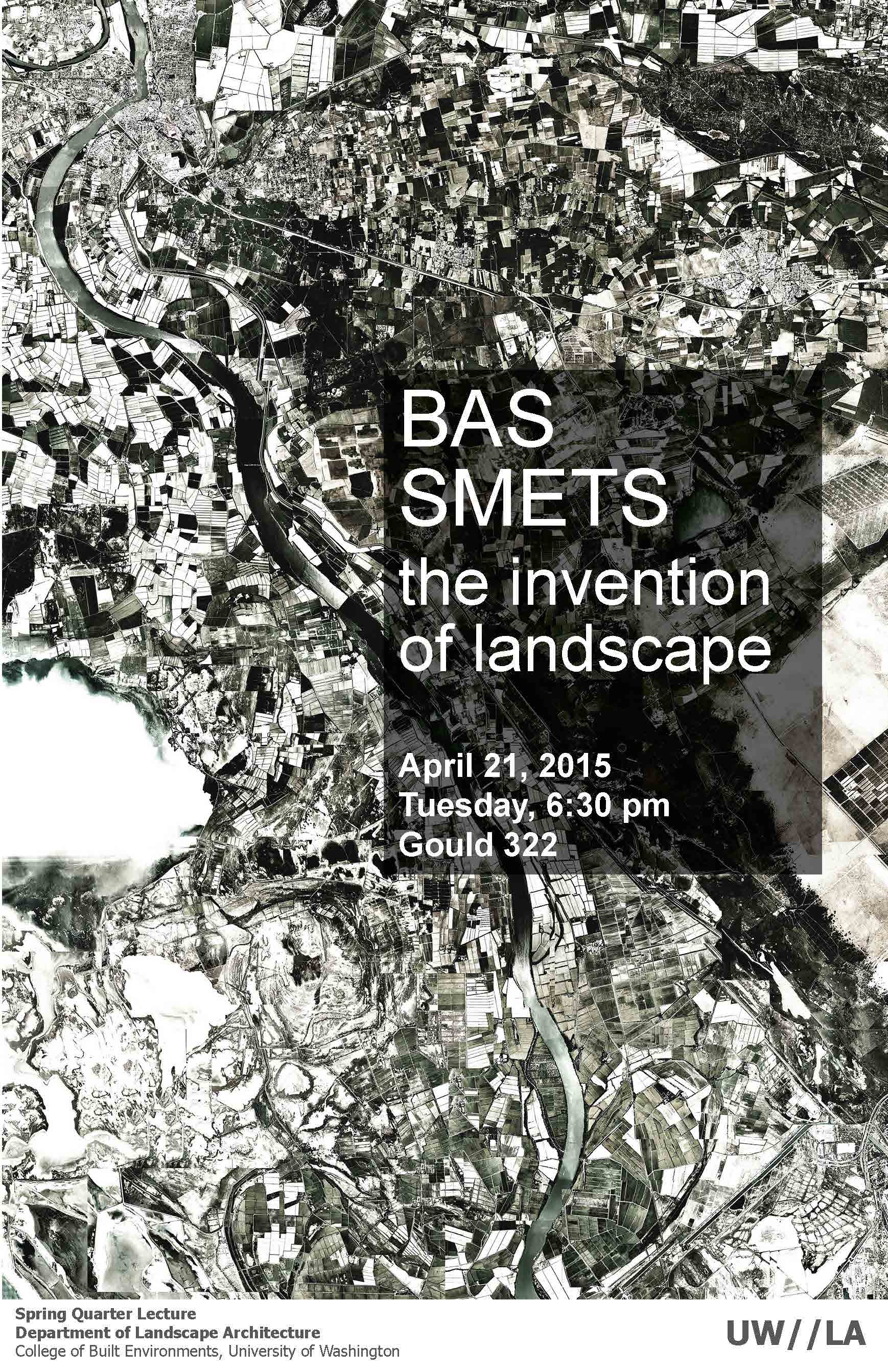Join us Tuesday April 21, 2015 at 6:30pm in Gould 322 for our Spring Lecture with Bas Smets of Belgian landscape architecture firm, Bureau Bas Smets. http://www.bassmets.be/
What is a landscape ? How is it designed ? How is it constructed? The western notion of ‘landscape’ was invented in the fifteenth century to name a new genre in painting. In Europe, the first landscapes were painted in the Low Countries, when windows appeared in paintings. The frame provided by the window created a view on the surroundings, independent from the commissioned scene in the foreground. These landscape paintings are characterized by their independence, both in content and in form, from the initial commission. The painters did not aim at a truthful rendering of the actual terrain but preferred revealing an unseen reality into new types of landscape.
A landscape project can be seen as an extension of the invention of landscape painting. Similar to landscape painting, it is independent from both the actual program and the limits of the site. Similar to landscape painting, it transforms a land -the given terrain- into a landscape -its perception- by means of an image. But a landscape project subsequently constructs this image on site. Once the landscape project has been constructed, the transformed reality produces new images, new perceptions. In this way landscape projects involve an endless succession of perception and transformation, imagination and execution, not unlike the cycle of the seasons.

Biography:
Bas Smets has a background in civil engineering, architecture and landscape architecture. He specializes in the conception of landscape strategies and the construction of public space. Starting from a precise reading of the existing land, his projects reveal an exemplary landscape. These projects span all scales, from territorial visions to infrastructural landscapes, from city centres to private gardens. He often collaborates with architects, artists and scientists. His office, founded in Brussels in 2007, employs 15 architects and landscape architects. He currently works on landscape designs in 18 countries and has delivered projects in 7 countries.
His constructed projects include the regeneration of the historic centre of Ingelmunster in Flanders, the gardens of the PMQ creation centre in Hong Kong, the Sunken Garden in London, the park around the headquarters of the Chamber of Commerce in Kortrijk, the enclosed gardens of the care centre in Lommel, and the reconversion of the historical gardens of Chateau Padiès in the French Tarn region.
Several of his large parks are under construction: the park of Tour & Taxis in Brussels, the park of Tweewaters in Leuven, and the new park for the Estonian National Museum in Tartu.
Bas Smets has developed a number of long term territorial visions for Brussels 2040, Lyon Part Dieu, Bordeaux 55.000 ha, Paris la Défense Est and Lille 2030. Recently he has collaborated on large infrastructural landscapes, winning the integration in its fragile landscape of a new freeway in Bruges and a new lock in Harelbeke.
In addition to these public commissions, he constructs one private garden a year. In 2009, he was selected as the landscape architect for the Parc des Ateliers in Arles, in close collaboration with Frank O. Gehry who is designing a new centre for the production of art. In 2011, he conceived the black landscapes for Philippe Parreno’s film ‘Continuously Habitable Zones’.
Bas Smets obtained a master’s degree in Architecture and Civil Engineering at the University of Leuven, and a postgraduate qualification in Landscape Architecture from the University of Geneva. He has taught landscape architecture in the La Cambre School of Architecture in Brussels, in the Ecole Spéciale d’Architecture in Paris and the Ecole Nationale Supérieure d’Architecture in Versailles. He regularly gives lectures in a number of institutions, the Harvard Graduate School of Design, the Ecole Polytechnique Fédérale de Lausanne, the Berlage Institute in Rotterdam and the Pavillon de l’Arsenal in Paris. In 2008 he was awarded the French prize for young landscape architects ‘Les Nouveaux Albums des Jeunes Architectes et des Paysagistes.’